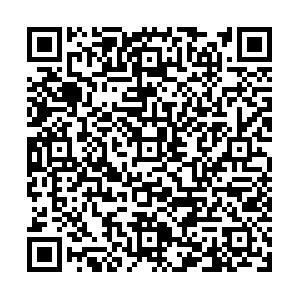Influence of individualised nursing intervention based on quantitative evaluation on the self-management ability of adolescents with schizophrenia
-
摘要:
目的 探讨量化评估下的个性化护理干预在青少年精神分裂症患者自我管理中的应用效果。 方法 选择2019年2月—2020年2月于绍兴市第七人民医院精神科住院治疗的青少年精神分裂症患者200例为研究对象,根据随机数字表法将患者分为干预组和对照组,每组各100例。对照组患者给予常规精神科护理,干预组则给予量化评估下的个性化护理干预。比较2组患者精神分裂症症状评分[阳性和阴性症状量表(PANSS)]、生活质量[生活质量综合评定量表(GQOLI-74)]、自我管理能力[精神分裂症患者自我管理量表(SSMIS)]以及社会功能情况[社会功能缺陷量表(SDSS)]。 结果 干预前,2组患者PANSS评分、GQOLI-74评分、SSMIS评分以及SDSS评分比较差异均无统计学意义,干预后,干预组患者PANSS评分为(41.97±3.81)分, 显著低于对照组的(60.03±4.01)分(P<0.05);干预组患者GQOLI-74评分显著高于对照组(均P<0.05);干预组患者SSMIS评分为(70.71±13.25)分,显著高于对照组的(59.46±6.53)分(P<0.05);干预组患者SDSS评分为(6.01±1.25)分,显著低于对照组的(7.76±1.53)分(P<0.05)。 结论 量化评估下的个性化护理干预可以有效提升青少年精神分裂症患者自我管理能力。 Abstract:Objective To explore the application effect of individualised nursing intervention based on quantitative evaluation on self-management of adolescents with schizophrenia. Methods A total of 200 adolescent patients with schizophrenia hospitalised in the Psychiatry Department of Shaoxing No.7 People's Hospital from February 2019 to February 2020 were selected as subjects. The patients were divided into two groups using the random number table method: 100 cases in the intervention group and 100 cases in the control group. Patients in the control group were given routine psychiatric nursing, whereas patients in the intervention group were given individualised nursing intervention under quantitative evaluation. Schizophrenia symptom score [positive and negative syndrome scale (PANSS)], quality of life (comprehensive quality of life rating scale, GQILI-74), [self-management ability schizophrenia self-management instrument scale (SSMIS)] and social function [social function defect scale (SDSS)] were compared between the two groups. Results Before intervention, no significant difference in PANSS, GQOLI-74, SSMIS and SDSS scores was found between the two groups. After intervention, the PANSS score of the intervention group (41.97±3.81) was significantly lower than that of the control group (60.03±4.01, P < 0.05). In addition, the GQOLI-74 score of the intervention group was significantly higher than that of the control group (P < 0.05). The SSMIS score of the intervention group (70.71±13.25) was significantly higher than that of the control group (59.46±6.53, P < 0.05). Furthermore, the SDSS score of the intervention group (6.01±1.25) was significantly lower than that of the control group (7.76±1.53, P < 0.05). Conclusion Personalised nursing intervention based on quantitative evaluation can improve the self-management ability of adolescents with schizophrenia. -
Key words:
- Quantitative evaluation /
- Individualised care /
- Schizophrenia /
- Teenagers
-
表 1 2组精神分裂症患者精神疾病症状评分比较(x ±s,分)
组别 例数 干预前总分 干预后总分 t值 P值 干预组 100 77.25±3.14 41.97±3.81 71.458 <0.001 对照组 100 77.12±3.01 60.03±4.01 34.085 <0.001 t值 0.299 32.650 P值 0.765 <0.001 表 2 2组精神分裂症患者生活质量评分比较(x±s,分)
组别 例数 躯体功能 心理功能 社会功能 物质生活 干预前 干预后 干预前 干预后 干预前 干预后 干预前 干预后 干预组 100 41.56±8.31 54.40±4.25a 39.56±6.68 49.60±3.24a 42.57±8.85 56.60±4.12a 35.52±6.36 47.60±3.25a 对照组 100 41.23±7.56 45.63±3.25a 39.40±5.41 41.45±3.58a 42.24 ±5.63 50.67±3.27a 35.50±5.51 40.44±3.23a t值 0.294 16.392 0.186 16.879 0.315 11.274 0.024 15.626 P值 0.769 <0.001 0.853 <0.001 0.753 <0.001 0.981 <0.001 注:与干预前比较,aP<0.05。 表 3 2组精神分裂症患者自我管理能力评分比较(x ±s,分)
组别 例数 干预前 干预后 t值 P值 干预组 100 41.25±6.25 70.71±13.25 20.109 <0.001 对照组 100 40.67±6.34 59.46±6.53 20.645 <0.001 t值 0.651 7.616 P值 0.516 <0.001 表 4 2组精神分裂症患者社会功能缺陷评分比较(x ±s,分)
组别 例数 干预前 干预后 t值 P值 干预组 100 11.25±1.25 6.01±1.25 29.642 <0.001 对照组 100 10.67±1.34 7.76±1.53 14.308 <0.001 t值 3.165 19.642 P值 0.002 <0.001 -
[1] 李玲. 认知心理干预联合社交技能训练对精神分裂症患者的影响[J]. 护理实践与研究, 2019, 16(17): 149-150. doi: 10.3969/j.issn.1672-9676.2019.17.065 [2] 徐丽, 容彩莲, 杨婕, 等. 行为矫正干预联合Teach-back健康教育模式对精神分裂症患者的影响[J]. 齐鲁护理杂志, 2019, 25(17): 35-39. doi: 10.3969/j.issn.1006-7256.2019.17.010 [3] 冯为, 杨雀屏, 李世明, 等. 基于戴明环管理模式的社区精神康复对慢性精神分裂症患者生存质量的影响[J]. 中国基层医药, 2019, 26(18): 2215-2219. doi: 10.3760/cma.j.issn.1008-6706.2019.18.009 [4] 刘东玮, 杨丽艳, 周郁秋. 精神分裂症患者精神残疾严重程度预测因素分析[J]. 护理学报, 2019, 26(16): 1-5. https://www.cnki.com.cn/Article/CJFDTOTAL-NFHL201916002.htm [5] 程爱萍, 李文和. 量化评估策略下的护理干预对糖尿病病人的健康行为及治疗效果的影响[J]. 蚌埠医学院学报, 2020, 45(7): 961-964, 967. https://www.cnki.com.cn/Article/CJFDTOTAL-BANG202007033.htm [6] 马艳妮, 杜霞, 郑霄, 等. 基于量化评估策略的护理干预在先心病患儿术后康复中的应用效果[J]. 解放军预防医学杂志, 2020, 38(4): 21-24. https://www.cnki.com.cn/Article/CJFDTOTAL-JYYX202004008.htm [7] 白春明, 郭剑, 赵先青. PANSS在罹患精神分裂症罪犯中的试用[J]. 解放军预防医学杂志, 2019, 37(5): 129-130. https://www.cnki.com.cn/Article/CJFDTOTAL-JYYX201905064.htm [8] 齐晓燕, 方喜玲, 王静. 纽曼系统护理模式对精神分裂症患者不良情绪和生活质量的影响[J]. 检验医学与临床, 2019, 16(22): 3345-3347. doi: 10.3969/j.issn.1672-9455.2019.22.034 [9] 张玉兰, 叶慧华, 李江莲. 正念减压疗法对精神分裂症患者的影响[J]. 齐鲁护理杂志, 2020, 26(15): 38-41. doi: 10.3969/j.issn.1006-7256.2020.15.010 [10] 潘海峰, 徐云. 儿童注意缺陷多动障碍家庭环境状况、行为问题和社会功能调查及干预措施分析[J]. 中国妇幼保健, 2020, 35(14): 2698-2700. https://www.cnki.com.cn/Article/CJFDTOTAL-ZFYB202014051.htm [11] 曹译丹, 石捷, 陶建青, 等. 以家庭为中心的心理护理对老年抑郁症患者认知功能的影响[J]. 广西医科大学学报, 2016, 33(4): 752-754. https://www.cnki.com.cn/Article/CJFDTOTAL-GXYD201604064.htm [12] 石银燕, 夏泳. 团体心理治疗对首发精神分裂症患者认知功能、社会功能及疗效的影响[J]. 中华全科医学, 2018, 16(6): 957-960. https://www.cnki.com.cn/Article/CJFDTOTAL-SYQY201806030.htm [13] 于新红. 延续性健康教育对精神分裂症患者出院后精神症状与服药依从性的影响[J]. 护理实践与研究, 2019, 16(16): 145-146. doi: 10.3969/j.issn.1672-9676.2019.16.063 [14] 刘英, 张凯, 胡江. 全程康复护理对精神分裂症恢复期病耻感及心理状况的影响[J]. 海南医学, 2019, 30(17): 2297-2299. doi: 10.3969/j.issn.1003-6350.2019.17.038 [15] 王海荣, 刘彩凤. 基于量化评估策略下的个性护理干预在青少年首发精神分裂症中的应用研究[J]. 护士进修杂志, 2018, 33(11): 978-981. https://www.cnki.com.cn/Article/CJFDTOTAL-FSJX201811005.htm -

 点击查看大图
点击查看大图
计量
- 文章访问数: 333
- HTML全文浏览量: 184
- PDF下载量: 4
- 被引次数: 0



 下载:
下载: 